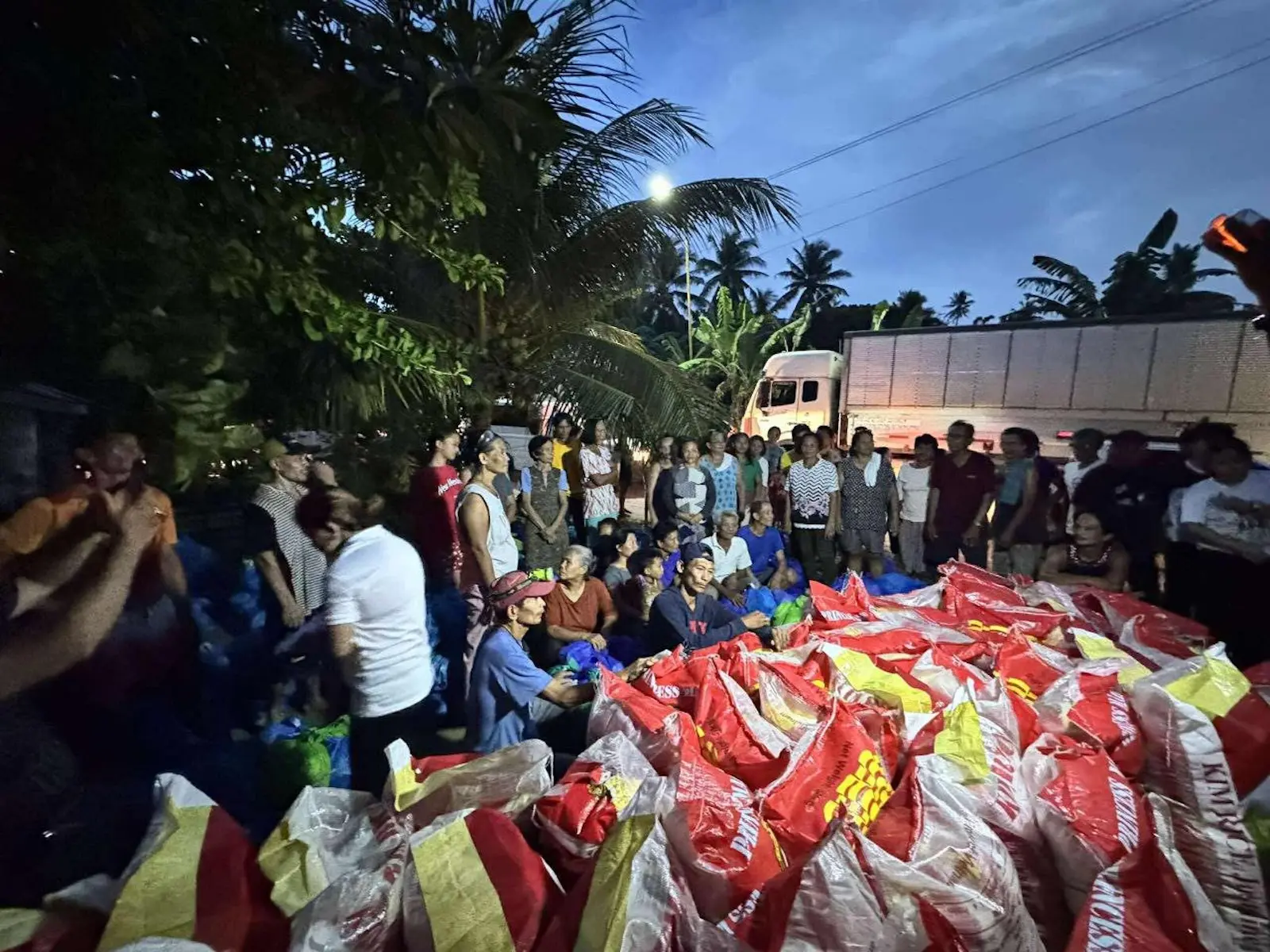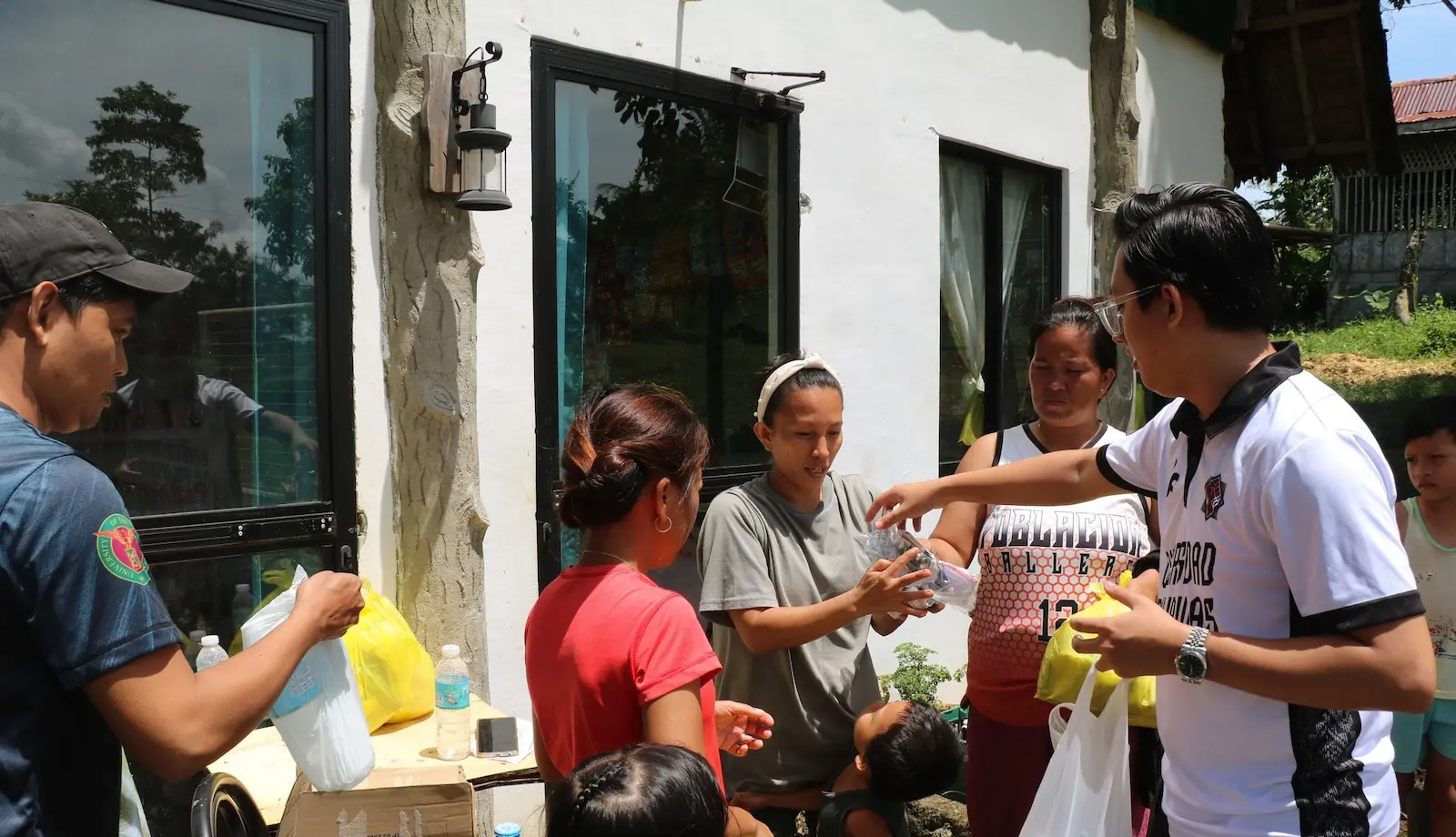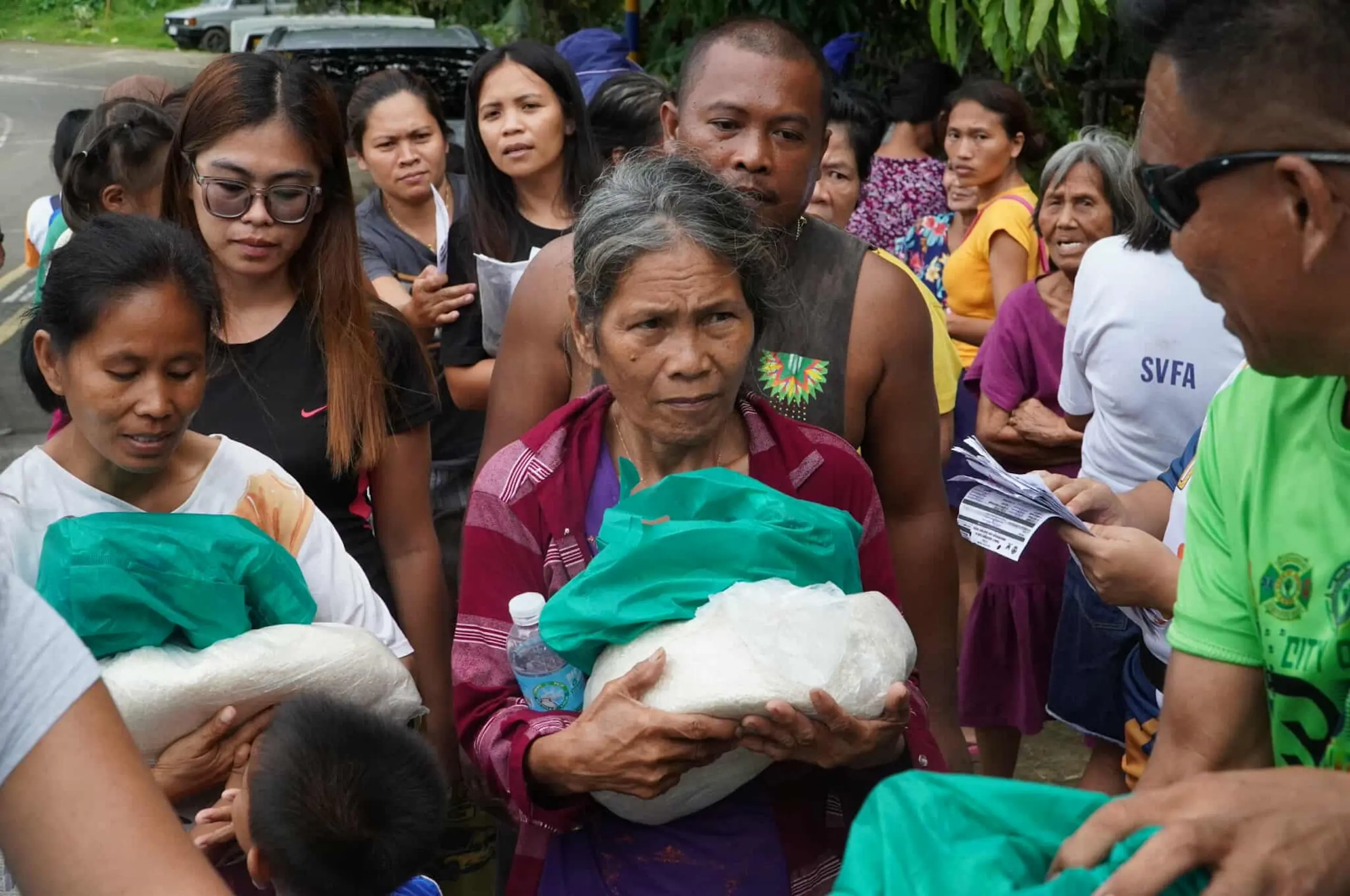Over a week after a powerful magnitude 6.9 earthquake jolted northern Cebu on September 30, local government units and private organizations are still scrambling to deliver aid to devastated communities.
Although the earthquake’s epicenter was close to the city of Bogo, the northern municipalities of Medellin, San Remigio, and nearby cities all the way to Bogo were also deeply impacted. In the days after the earthquake, news immediately spread of the destruction left in its wake. As of the time of writing, the National Disaster Risk Reduction and Management Council (NDRRMC) has reported that 39,806 houses and five heritage churches have been damaged by the disaster. The NDRRMC also reported 72 people dead, 559 others injured, and roughly 611,624 people in evacuation centers.

Those left without homes after the earthquake have rushed to find shelter, whether this be in centers or makeshift settlements in areas near their municipalities. “They’re living in these ‘tent cities,’ but they’re not properly habitable. Many of the people living there don’t want to go back yet to repair their houses because they’re scared of the aftershocks,” Allen Tan, founder of Cebu cultural center Atúa Midtown, told Rolling Stone Philippines. Tan organized a donation drive upon hearing about the earthquake, sending food, water, and other basic necessities to the northern tip of Cebu.
Both national agencies and local government units have done their best to provide the necessary relief goods to the impacted families. The Department of Social Welfare and Development (DSWD) has recently completed its second wave of relief goods, delivering nearly 450,000 boxes. Four mobile kitchens have also been strategically placed in Northern Cebu, with a fifth on the way as of writing.
However, much of the relief sent to the north has also come from private groups and individuals who want to do their part to help. The first weekend after the earthquake saw roads to northern Cebu packed with traffic, with travel time reaching almost 12 hours as Cebuanos drove up north to deliver aid. Cebu Governor Pam Baricuatro, in response to the severe traffic congestion, publicly appealed for donations to be centralized through government channels.

But for many volunteers, natural disasters have always been a cause for immediate action. “It’s almost an automatic response for a lot of Cebuanos to organize some form of relief,” said Tan. “I’m thinking of [Super Typhoon] Ruping back in the ‘90s, and we were badly hit. Part of the problem was that it was hard for supplies to reach [Cebu], so we had to do a lot of the initial relief work ourselves.”
Tan also noted that delivering relief has been especially challenging because the areas affected are so difficult to access. “I feel like [provincial government offices] are doing a lot, but it’s all so overwhelming because there are so many areas that are unreachable,” said Tan.
He also shared that he felt people outside of Cebu were only donating to one city, when multiple areas were affected. “All [they] hear about is Bogo,” said Tan. “So they send everything to Bogo. But no one’s talking about the other areas like Medellin, San Remigio, or even the islands. The efforts to help out the islands have been so [difficult], [because] you have to take a bangka pa to get there.”
Continuing efforts to support Northern Cebu, Tan has organized a benefit concert at Atúa Midtown on October 10. Cebu-based acts such as Oh! Caraga, Wonggoys, Vincent Eco, and more will be taking the stage, with door fees and donated supplies serving as direct contributions to ongoing relief initiatives.
What Lies Ahead
For other groups planning relief efforts, the focus is slowly shifting from immediate aid to long-term recovery and reconstruction. “We’re already planning to send construction materials for the people in the North starting to rebuild,” Professor Palmy Marinel Tudtud, University of the Philippines Cebu’s (UP Cebu) Vice Chancellor for Academic Affairs, told Rolling Stone Philippines.
The university immediately mobilized its resources in the aftermath of the disaster, organizing donation drives and sending truckloads of aid to the north. “Overwhelming kaayo ang support from the public,” said Tudtud. “It’s so much work, but it has to happen in a very short amount of time [because] they really need the support.”
Like Tan, Tudtud noted that UP Cebu’s donation efforts had faced several challenges during the group’s first drive to the north. “Patience is definitely a virtue,” said Tudtud. “It was 10 hours of waiting on the road, even if you leave early in the morning. And even when you reach [those areas], you have to be strategic: Which municipalities are you going to help? Can you reach them? What’s communication there like?”
Despite logistical hurdles, both institutional and grassroots efforts continue to push forward, driven by a sense of urgency. While challenges remain, such as inaccessible areas and uneven distribution of aid, the collective response has shown how the Cebu province comes together in times of crisis. “It’s always been Cebuanos helping Cebuanos,” said Tan.





